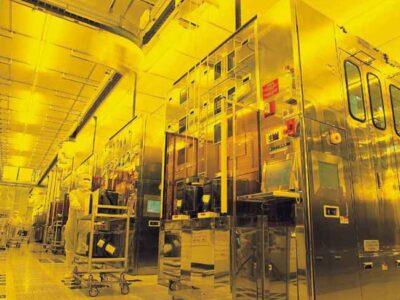
AI and machine learning for cell siting cuts 5G costs
The white paper, Precision Planning for 5G Era Networks with Small Cells, was created by working teams at the two industry associations and includes project leadership contributions from: AT&T, iBwave, Keima and Nokia.
The ever-increasing demand for mobile data is driving network densification with the deployment of small cells. Although lower cost than macro towers, the compact, low-power nature of small cells means they also serve a smaller area. This in turn means they need to be located closer to demand hotspots in order to effectively cover the mobile data demands of customers.
Manhattan, New York was one example used in the white paper where AI and algorithmic ML automated design processes were able to provide coverage and dominance while reducing the number of sites required from 185 to just 111. This reduction provided significant savings while additionally creating optimized coverage.
The paper also examines why measurements of network quality, signal strength and quality, traffic patterns, and other topographical considerations are important for maximizing a network operators’ return on capital investment, and demonstrates how including AI and ML models in small cell design and siting efforts can provide optimal coverage and throughput with the most efficient capital investment.
According to Prabhakar Chitrapu, Chair of Small Cell Forum: “Small cells will form one of the foundations on which 5G is built, particularly through dense HetNets in spectrum-hungry urban areas. It is essential that as an organization we consider the implications of this, and work to ensure that processes are in place to make the deployment of these cells viable. This is a hugely important body of work, undertaken by Forum members and alongside our partners at 5G Americas, which demonstrates that Artificial Intelligence and Machine Learning can inform cost, time and resource efficiencies that surpass those of teams of people working to traditional methods.”
The report details recommended best practices for precision planning including:
- For maximum return on investment, small cells should be placed as close as possible to demand peaks; best practice is within 20-40m.
- Network operators would like equipment that estimates location of usage and quality reports to adopt smarter algorithms such as the machine learning approach demonstrated. Median locate errors less than 20m are expected for small cell planning purposes.
- Machine learning models should be part of any small cell design effort. Different inputs and assumptions will be factors in the resulting models that are generated.
Said Chris Pearson, President of 5G Americas: “Machine intelligence and algorithms are tools that can enable excellent small cell siting efficiencies. It will be imperative for operators and their vendor partners to work on integrating massive amounts of data with these new network design capabilities.”
In addition, the aggregation of very large data sets are important to provide algorithms with sufficient test data to inform results. These data sets provide algorithms with information on factors such as power and backhaul availability, signal-to-interference ratio, spectral efficiency, line of sight, traffic estimates, overlapping cell coverage, agreement requirements with site owners, and numerous other considerations.
Peter Love, 5G Principal Architect at Nokia comments: “The evolution towards 5G must be looked at as a new business opportunity for Communications Service Providers (CSPs) to become ‘Digital Service Providers’, with a paradigm of change based on technology, end user services and business lifecycle. By using big data analytics, including machine learning, to digitally model specific use cases, will deliver better returns on investment (RoI) for network evolution plans and hence a better business outcome. Thus, benefiting CSPs, industry and 5G ecosystem as a whole.”
Said Iris Barcia, Chief Operating Officer at Keima: “It is now accepted wisdom that HetNets and densification will be the new normal for 5G network rollouts. With the increased complexity of these new networks, existing planning tools are no longer fit for this purpose, and automatic design processes specifically for dense urban environments are required to reduce planning time and cost. Ground-breaking Artificial Intelligence Machine Learning technologies can enable remarkable capital and operational efficiencies, where the design software learns and adapts to draw on many inputs, each providing an immense amount of granular data to inform decisions. The implications of this shift are significant for the future of network design industry-wide.”
 If you enjoyed this article, you will like the following ones: don't miss them by subscribing to :
eeNews on Google News
If you enjoyed this article, you will like the following ones: don't miss them by subscribing to :
eeNews on Google News



